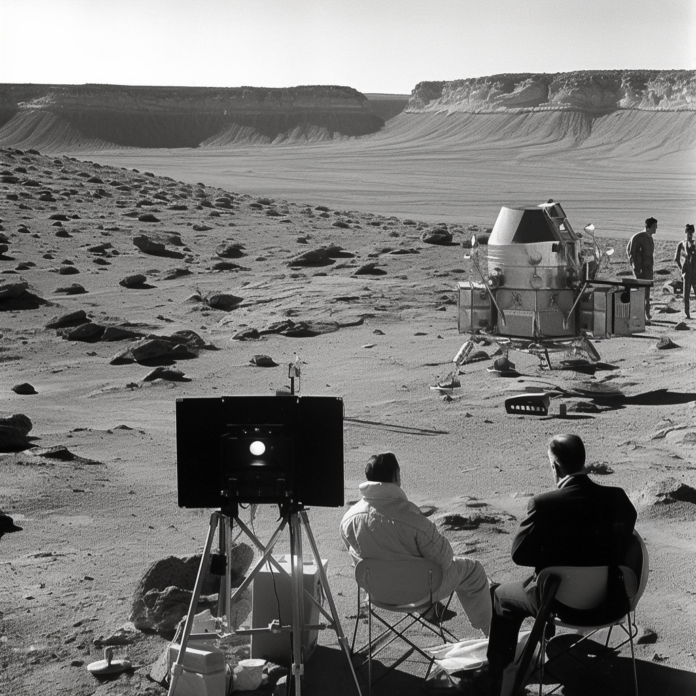
Introduction
The Moon landing refers to the historic event on July 20, 1969, when the Apollo 11 mission successfully landed the first humans on the Moon. Astronauts Neil Armstrong, Buzz Aldrin, and Michael Collins achieved this milestone for NASA, marking a turning point in the Space Race between the United States and the Soviet Union. However, some people believe that the Moon landing was a hoax, with the event being faked by the U.S. government and staged by acclaimed film director Stanley Kubrick. This article will explore the facts surrounding the Moon landing and delve into the conspiracy theory of a faked mission.
Apollo 11 Moon Landing: Background and Facts
The Apollo 11 mission was part of NASA’s Apollo program, which aimed to land humans on the Moon and bring them safely back to Earth. The three-stage Saturn V rocket launched from Kennedy Space Center on July 16, 1969, carrying astronauts Neil Armstrong, Buzz Aldrin, and Michael Collins. Armstrong and Aldrin spent more than two hours exploring the lunar surface, collecting samples and conducting experiments, while Collins orbited above in the Command Module.

Key facts about the Moon landing:
- The lunar module (named “Eagle”) touched down on the Moon’s surface in the Sea of Tranquility.
- Neil Armstrong was the first human to set foot on the Moon, uttering the famous words, “That’s one small step for a man, one giant leap for mankind.”
- The mission’s total duration was approximately eight days, from launch to splashdown on Earth
Moon Landing Conspiracy Theory: Stanley Kubrick’s Alleged Involvement
The Moon landing conspiracy theory proposes that the U.S. government faked the Apollo 11 mission to win the Space Race against the Soviet Union. According to this theory, the government enlisted Stanley Kubrick, the renowned director of films such as “2001: A Space Odyssey” and “Dr. Strangelove,” to stage and film the Moon landing. The theory is based on a combination of perceived inconsistencies in official footage, photos, and records, as well as Kubrick’s alleged connections to the government and secretive organizations.
Some of the alleged inconsistencies include:
- The absence of stars in the sky in photographs taken on the Moon.
- The presence of shadows from multiple angles, suggesting artificial lighting.
- The fluttering of the U.S. flag, despite the Moon’s lack of atmosphere and wind.
It is important to note that scientists, engineers, and other experts have debunked these inconsistencies, providing explanations grounded in physics, astronomy, and photography.
Conclusion
While the Moon landing conspiracy theory involving Stanley Kubrick is an intriguing and popular topic, the overwhelming evidence, including telemetry data, rock samples, and eyewitness accounts, supports the veracity of the Apollo 11 mission.





